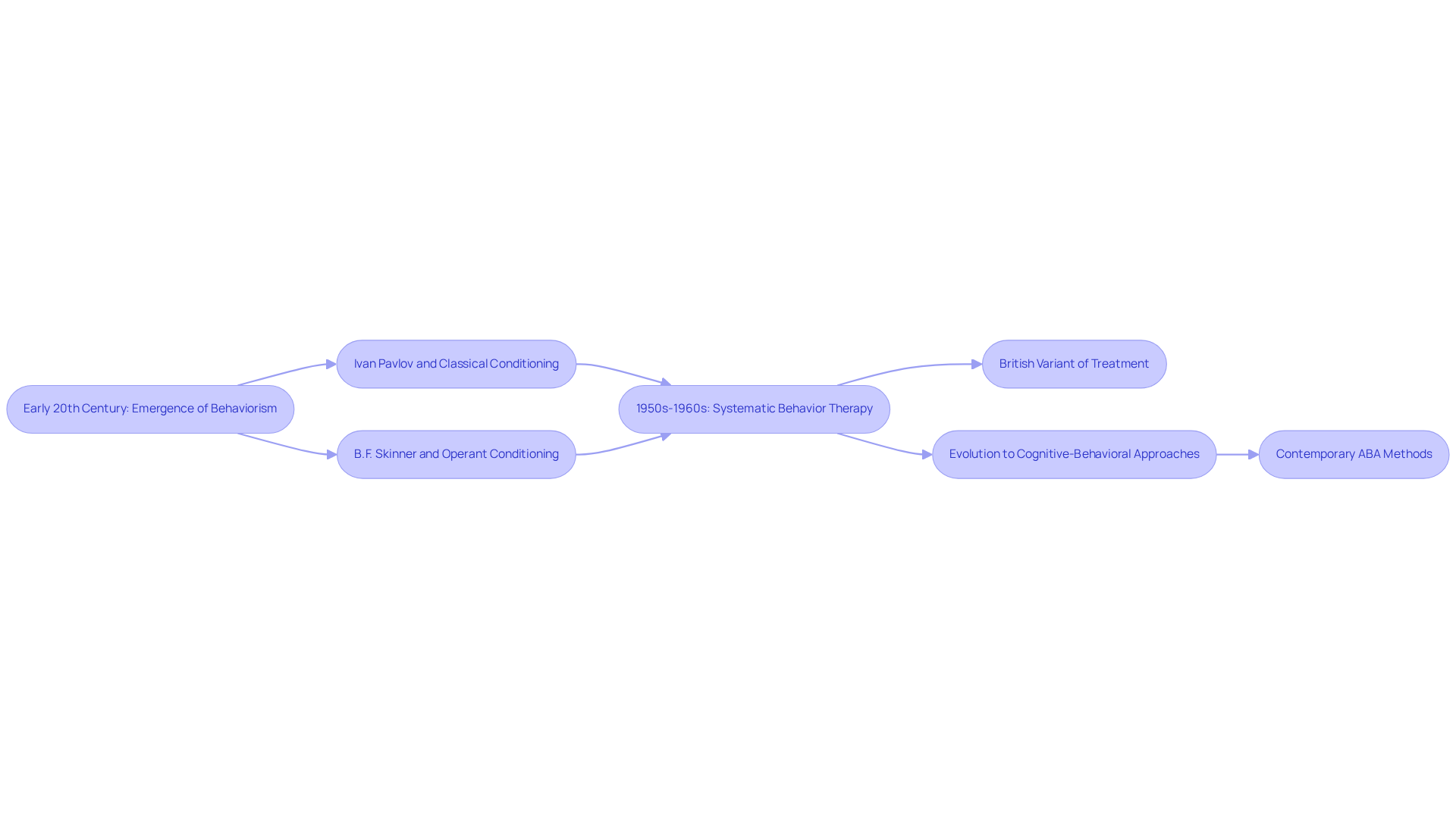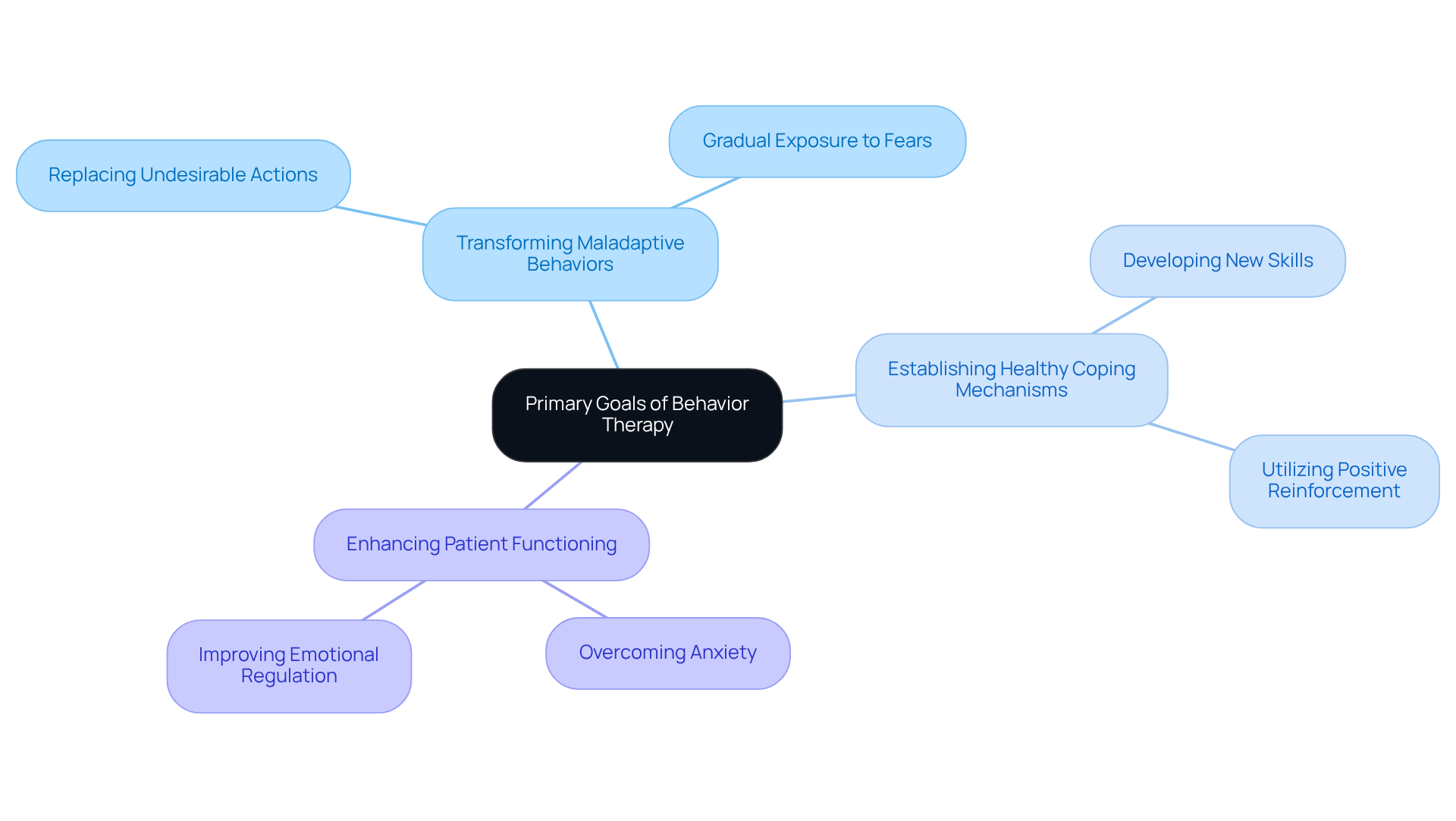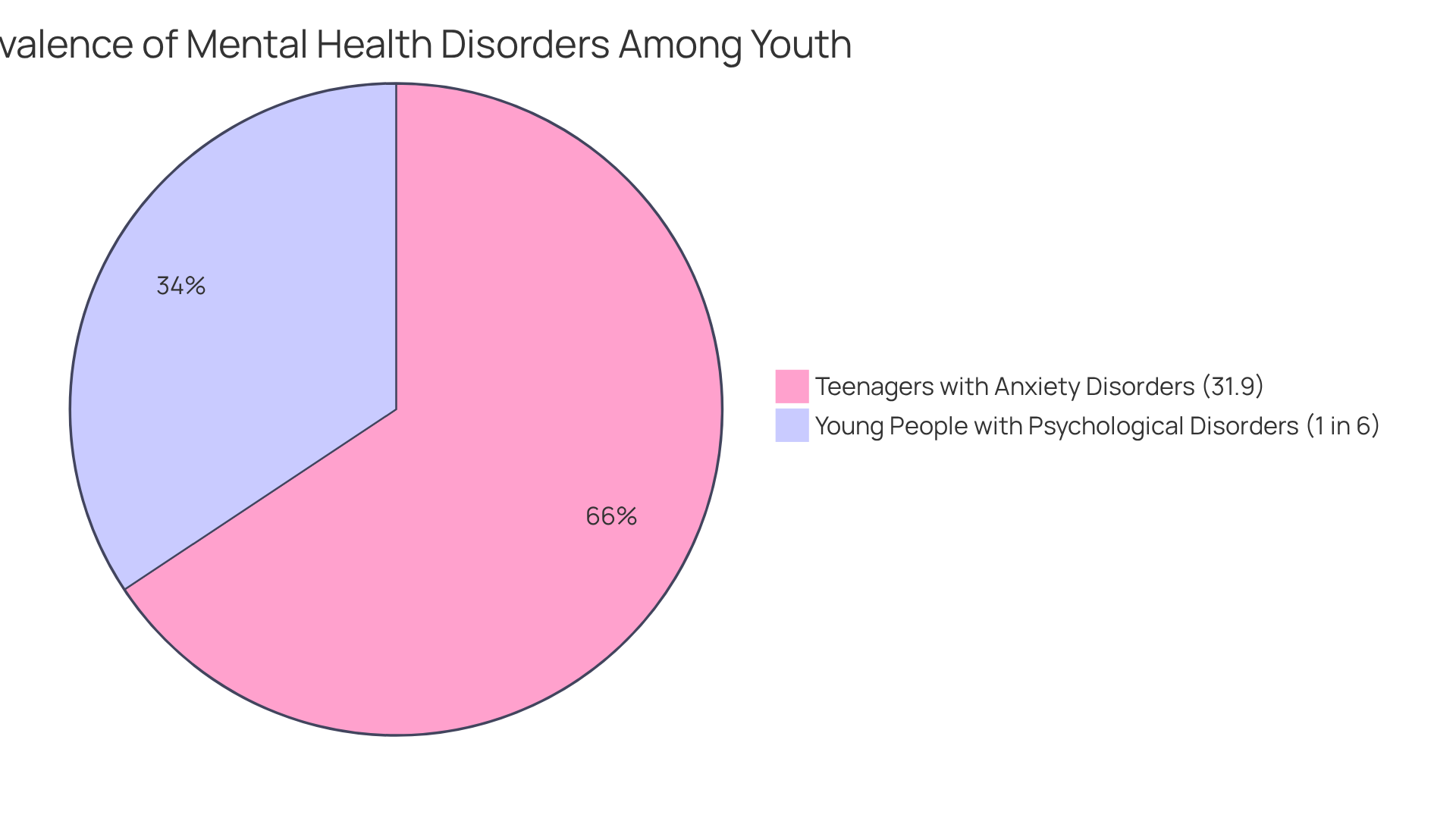July 2, 2025

The goal of behavior therapy is to enhance patient outcomes by transforming maladaptive behaviors into positive actions and improving overall functioning. This is particularly relevant in today's healthcare landscape, where the demand for effective therapeutic interventions is at an all-time high.
Structured interventions, such as cognitive-behavioral therapy (CBT) and behavior modification techniques, effectively address various psychological disorders. These methods lead to significant improvements in patients' quality of life and coping mechanisms.
As healthcare employers, have you considered how the right recruitment strategies can optimize your therapeutic outcomes? By focusing on reliable platforms, you can ensure that your team is equipped to implement these transformative therapies effectively.
The increasing demand for effective mental health interventions has brought behavior therapy into the spotlight, underscoring its pivotal role in enhancing patient outcomes. This structured therapeutic approach not only targets maladaptive behaviors but also equips individuals with essential skills to navigate their emotional challenges. As the landscape of mental health treatment evolves, questions arise about the effectiveness of these methods and their long-term impact on patients' lives.
How can behavior therapy bridge the gap between traditional treatments and the growing need for personalized care in today’s diverse mental health landscape?
The demand for Board Certified Behavior Analysts (BCBAs) is projected to rise by 25% by 2026, underscoring the critical need for effective behavioral interventions in healthcare. Cognitive therapy stands as a structured therapeutic method designed to transform maladaptive behaviors through techniques grounded in learning principles. Central to this approach are fundamental concepts such as reinforcement, punishment, and modeling, which work in concert to promote positive behaviors while diminishing negative ones. This method operates on the premise that the goal of behavior therapy is to modify or unlearn all behaviors through systematic interventions.
Methods like operant conditioning, which reinforces desired behaviors, and classical conditioning, which connects stimuli to evoke responses, are frequently employed to facilitate behavioral change. For example, operant conditioning has shown remarkable success in treating children with autism, where positive reinforcement strategies foster desired social interactions and communication skills. Current expert opinions highlight that the goal of behavior therapy is to showcase the effectiveness of cognitive-behavioral treatment (CBT), with approximately 75% of participants reporting benefits, illustrating its efficacy in addressing diverse psychological issues.
Moreover, research indicates that the goal of behavior therapy is to implement behavioral interventions that may be as effective as traditional medications for conditions such as obsessive-compulsive disorder (OCD), with benefits often extending beyond the treatment period. This evidence-based approach shows that the goal of behavior therapy is to improve patient outcomes and cultivate a deeper understanding of the behavioral changes essential for long-term success. Furthermore, the evolution of psychological treatment is evident in methods like systematic desensitization, an early intervention for phobic disorders, showcasing the adaptability of these strategies to various mental health challenges.
As B.F. Skinner aptly noted, 'The outcomes of an action influence the likelihood of its happening again,' emphasizing the core principles that guide behavioral intervention practices. The combination of these insights and the rising demand for BCBAs highlights the importance of effective recruitment strategies, such as those offered by Hire ABA, to meet the growing needs in this vital sector.
Behavioral treatment has its origins in the early 20th century, emerging from behaviorism—a philosophy that emphasizes observable actions over internal psychological states. Pioneers such as Ivan Pavlov, known for his research on classical conditioning, and B.F. Skinner, who developed operant conditioning, laid the groundwork for this approach. By the 1950s and 1960s, the goal of behavior therapy gained traction as a systematic method for addressing various mental health disorders, standing in contrast to psychoanalytic techniques. During this time, the British variant of psychological treatment also emerged, further contributing to the field's advancement.
Over the decades, behavioral treatment has evolved to incorporate cognitive components, leading to the development of cognitive-behavioral approaches (CBT). This integration of cognitive and behavioral methods enhances treatment effectiveness. A pivotal study by Dr. Ole Ivar Lovaas in 1987 revealed that nearly 50% of children receiving intensive ABA intervention achieved significant improvements in IQ and educational placement. This underscores that the goal of behavior therapy is to demonstrate the effectiveness of these approaches, particularly concerning Autism Spectrum Disorder (ASD).
Today, contemporary ABA methods emphasize neurodiversity and client-centered strategies, reflecting a deeper understanding of mental health and the complexities of human behavior. This evolution highlights that the goal of behavior therapy is to address diverse needs, demonstrating its ongoing relevance and adaptability within the mental health landscape.

The primary objectives of behavioral treatment focus on transforming maladaptive behaviors, establishing healthy coping mechanisms, and enhancing overall patient functioning. Therapists strive to replace undesirable actions with positive alternatives, empowering individuals to develop new skills for effectively managing their emotions and responses.
For example, behavior modification can aid patients in overcoming anxiety by gradually introducing them to feared situations within a controlled environment, thus diminishing avoidance behaviors.
Ultimately, the goal of behavior therapy is to equip individuals with the necessary resources to confront challenges and improve their well-being, which enables them to lead more fulfilling lives.

The goal of behavior therapy is to provide crucial intervention in treating various psychological disorders, such as anxiety, depression, and obsessive-compulsive disorder (OCD). Its structured approach facilitates measurable progress, enabling therapists to track patient outcomes and adjust treatment plans effectively. Notably, studies consistently show that psychological treatment can lead to significant improvements in functioning and quality of life for individuals facing emotional challenges.
Approximately 31.9% of teenagers aged 13 to 18 experience anxiety disorders, and therapeutic methods have proven effective in helping these individuals manage their symptoms. Furthermore, 1 in 6 U.S. young people aged 6-17 encounter a psychological disorder annually, underscoring the importance of counseling in addressing these issues.
The emphasis on practical skills and coping strategies reflects that the goal of behavior therapy is to equip patients with essential tools to manage their symptoms effectively, fostering long-term resilience and well-being. Real-world examples illustrate how treatment approaches have transformed patient outcomes, with many reporting substantial reductions in anxiety and depressive symptoms after engaging in targeted therapeutic measures.
This evidence highlights that the goal of behavior therapy is to enhance mental health treatment and improve patient well-being, particularly given the barriers rural populations face in accessing mental health care.

The essence of behavior therapy lies in its ability to foster significant improvements in patient outcomes through structured interventions aimed at modifying maladaptive behaviors. By integrating principles from both cognitive and behavioral approaches, this therapeutic method not only addresses immediate psychological challenges but also equips individuals with the tools necessary for long-term success in managing their mental health.
Key insights explored throughout the article include:
The evidence presented highlights the effectiveness of behavior therapy in treating conditions like anxiety, depression, and obsessive-compulsive disorder, with many patients reporting substantial benefits that extend beyond the treatment period. This underscores the vital role behavior therapy plays in enhancing overall patient well-being and functioning.
As the demand for behavioral interventions continues to grow, it is imperative to recognize the significance of behavior therapy in the mental health landscape. Are we fully embracing its principles and methodologies? By doing so, healthcare providers can better address the diverse needs of individuals facing psychological challenges. Ultimately, behavior therapy stands as a beacon of hope for many, reinforcing the idea that effective treatment can lead to meaningful changes in lives, fostering resilience and well-being for all who engage in this transformative process.
What is behavior therapy?
Behavior therapy is a structured therapeutic method designed to transform maladaptive behaviors through techniques grounded in learning principles, aiming to modify or unlearn behaviors through systematic interventions.
What are the core principles of behavior therapy?
The core principles of behavior therapy include reinforcement, punishment, and modeling, which work together to promote positive behaviors while diminishing negative ones.
What methods are commonly used in behavior therapy?
Common methods in behavior therapy include operant conditioning, which reinforces desired behaviors, and classical conditioning, which connects stimuli to evoke responses.
How effective is behavior therapy for children with autism?
Operant conditioning has shown remarkable success in treating children with autism by using positive reinforcement strategies to foster desired social interactions and communication skills.
What is the reported efficacy of cognitive-behavioral treatment (CBT)?
Approximately 75% of participants in cognitive-behavioral treatment (CBT) report benefits, illustrating its efficacy in addressing diverse psychological issues.
Can behavior therapy be as effective as traditional medications?
Research indicates that behavior therapy may be as effective as traditional medications for conditions such as obsessive-compulsive disorder (OCD), with benefits often extending beyond the treatment period.
What is systematic desensitization?
Systematic desensitization is an early intervention method for phobic disorders, showcasing the adaptability of behavioral strategies to various mental health challenges.
Why is there a rising demand for Board Certified Behavior Analysts (BCBAs)?
The demand for BCBAs is projected to rise by 25% by 2026, highlighting the critical need for effective behavioral interventions in healthcare.
Our expert recruitment strategies and AI-driven sourcing ensure that you receive top-notch candidates quickly, without compromising on quality. Whether you’re looking for BCBAs, Clinical Directors, or RBTs, we’ve got you covered.